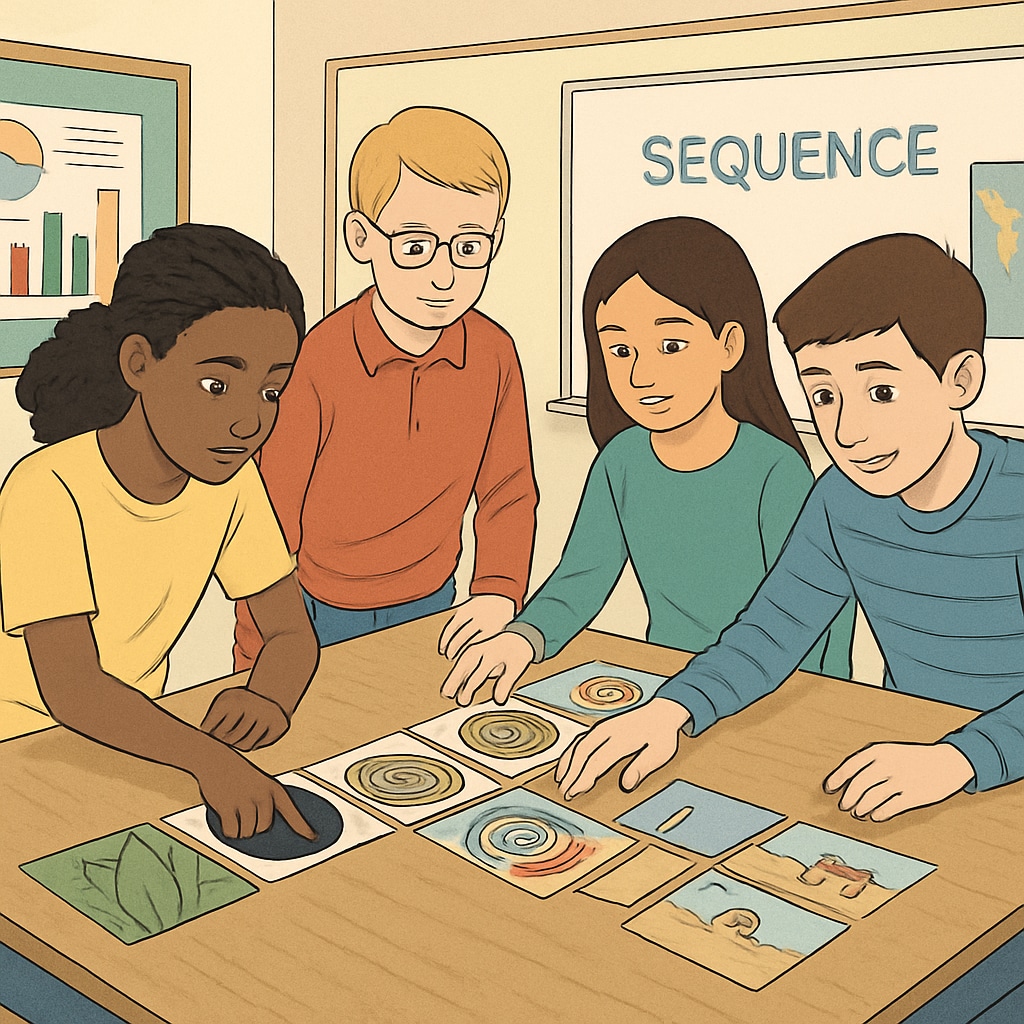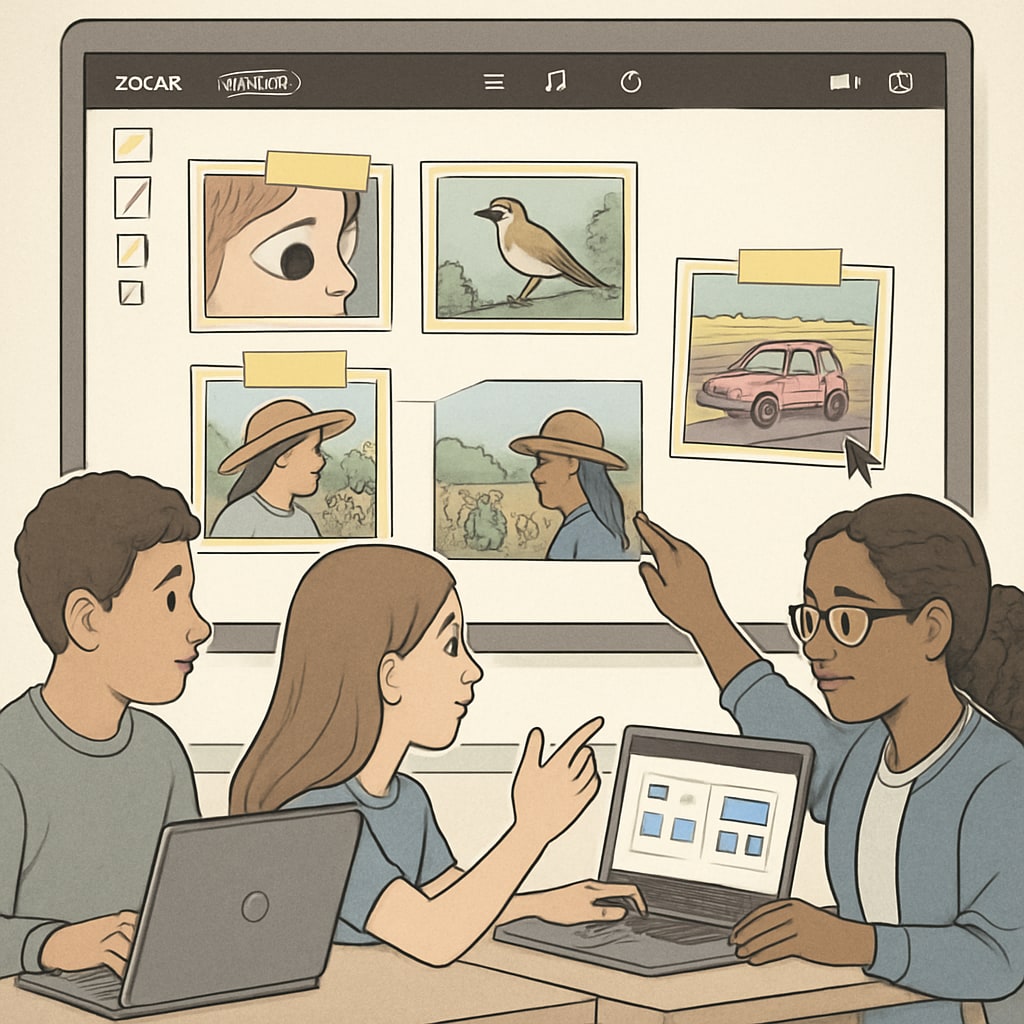Zoom and ReZoom activities have proven to be powerful tools in K12 education, effectively combining structured collaboration and interactive learning. These activities, designed to encourage teamwork and problem-solving, are gaining traction as educators strive to create more engaging and participatory classrooms. By utilizing clear “answer sequences,” these activities help students focus on orderly thinking and teamwork, fostering both individual and group development. In this article, we explore the significance of these activities and offer practical tips for implementing them in digital and in-person educational settings.
The Value of Zoom and ReZoom Activities in Education
Zoom and ReZoom are interactive storytelling activities where students work together to piece together a story or sequence based on visual or textual clues. These activities are often structured around books like Zoom by Istvan Banyai and its sequel ReZoom, which feature interconnected visual narratives that zoom in or out to reveal context. In the classroom, they serve as metaphors for perspective, collaboration, and problem-solving.
Here are some of the key benefits of integrating Zoom and ReZoom into K12 education:
- Enhanced Collaboration: Students must work together to determine the correct sequence, promoting teamwork and communication skills.
- Critical Thinking: Identifying patterns and logical sequences helps students develop analytical abilities.
- Engagement: The visual and interactive nature of these activities keeps students actively involved.
- Perspective-Taking: These exercises encourage students to consider multiple viewpoints, fostering empathy and creative thinking.

Organizing Zoom and ReZoom Activities: Best Practices
While Zoom and ReZoom activities are highly effective, their success depends on careful planning and execution. Here are some practical tips for educators:
- Prepare Materials: Ensure that all visual cards or textual clues are ready and organized before the activity begins. Laminated cards or digital resources can be reused for multiple sessions.
- Explain the Rules: Clearly outline the objective—students must work together to piece the sequence into its correct order. Offer examples to make the instructions easier to understand.
- Divide into Groups: Split the class into small groups to maximize participation. Smaller groups allow each student to contribute actively.
- Encourage Reflection: Once the sequence is complete, have students discuss their thought processes and what they learned. Reflection deepens understanding and reinforces collaboration skills.
- Adapt for Digital Classrooms: In virtual settings, use tools like Google Slides or Jamboard to create interactive boards where students can drag and drop sequence components.

Incorporating Structured Interaction in Digital Learning
The shift to online education has introduced new challenges in maintaining student engagement. However, Zoom and ReZoom activities can be adapted to digital platforms to create dynamic and interactive virtual lessons. Tools such as Microsoft Teams, Zoom (the video conferencing platform), and Google Classroom allow educators to organize breakout rooms for small group collaboration. Digital whiteboards, annotation tools, and shared documents can replace physical cards, ensuring the activity retains its collaborative essence.
For example, educators can use a shared presentation where each slide represents one “piece” of the Zoom/ReZoom sequence. Students can move slides around, annotate clues, and discuss their choices in real-time. This method not only mirrors the physical activity but also leverages technology to enhance collaboration.
External Resources for Educators:
- Zoom book on Wikipedia: Learn more about the original source material.
- Critical thinking on Britannica: Understand the role of structured activities in developing analytical skills.
Conclusion: Unlocking the Potential of Zoom and ReZoom Activities
Zoom and ReZoom activities exemplify how structured interaction can transform classroom dynamics. By focusing on collaboration, critical thinking, and perspective-taking, they provide students with valuable skills that extend beyond academics. Whether in-person or online, these activities are adaptable and impactful, making them a must-have for any educator aiming to foster deeper engagement and learning.
Educators can start small by incorporating these activities into weekly lesson plans, gradually building student familiarity and confidence. With the right preparation and tools, Zoom and ReZoom activities can become a cornerstone of modern K12 education, reshaping the way students learn and interact.
Readability guidance: This article employs concise paragraphs, clear headers, and actionable lists to maximize readability. Transitions like “for example,” “in addition,” and “however” ensure smooth flow, while lists break down key concepts for easy comprehension.


